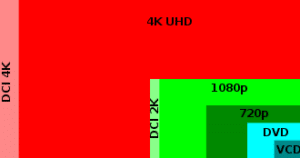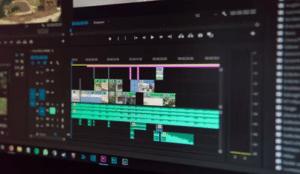Bitrate And Resolution Explained

Bitrate And Resolution Explained
Some common misconceptions regarding bitrate and resolution always confuse individuals. Bitrate and resolution are two of those cornerstones of what makes a better quality image or video.

The bitrate and resolution settings are meant to be orchestrated to control the video quality before uploading or live-streaming.
Being the fundamentals of the quality of the image or video, you must pay attention to have professional-looking video quality. It’s possible only if you make the correct encoding setting choices. For making the correct choices, you need the right knowledge.
There’s one question that may come up in your mind. It’s, “Which is more significant for video streaming,Bitrate or Resolution?”. Hence, we have come up with this article to get you an idea of bitrate and resolution and their relation. It will help you decide on which one holds more importance.
Let’s get down to it then!
Bitrate
Bitrate is the unit to measure the data required to encode a single second of a video.
That’s why bitrate’s units are Mbps (megabits per second), kbps (kilobits per second), and so on. Without higher bitrates, it isn’t possible to create high-quality videos.
In 2021, it is noticeable that there was a decrease in video streaming ads (ad bitrate) quality by 2%. What’s more, higher bitrates will lead to a higher quality of a video, increasing the file size. This pattern correlates with the resolution of image resolution.
When it comes to video streaming, you would need to use specific algorithms to determine how you can use or decide on a particular value of bitrate for your video, which includes:
-
- Variable Bitrate (VBR): The bitrate can fluctuate while the video=quality will be constant
- Constant Bitrate (CBR): The video quality can be sacrificed while keeping the bitrate constant.
- Capped Variable Bitrate (Capped VBR): The bitrate can fluctuate within a cap or limit, and the video quality will be constant.
Does Bitrate Affect the Video Quality?
Bitrate does affect the video quality, but how? The answer lies in how video compression works. Hence, let’s see what the compression algorithm does when compressing a video:
- Helps in conversion of video from “pixel domain” to the “frequency domain.” The conversion takes place through DCT or Discrete Cosine Transform.
- Discards several frequencies through Quantization using a method that doesn’t enable humans to perceive the information loss.
When compressing a video, you will throw off some information to make the video quality better. However, compressing a video heavily might lead to extensive information loss, which means being perceivable to humans.
Resolution
When it comes to the resolution of a video, it’s the width by the height of that video. Its unit of measurement is Pixels. So now, what are pixels? A pixel is the minor component of an image, like an atom for an element.

Each pixel contains data, and all the pixels combined create a whole image file. Like a puzzle, when all the pieces put together can showcase the solution.
Since different images have different information, the pixel count should be higher to get a higher quality image.
Pixels, always displayed horizontally and vertically, depending on the aspect ratio of an image. For example, a 16:9 picture can have a resolution of 1280×720 pixels compared with a square image with 1000×1000 pixels.
When it comes to video streaming, resolution plays a vital role. It affects what a user can see on the screen. Hence, you should focus on its setting in a better way. You can use a good video codec if you offer a big bitrate budget to the encoder. Also, you should select a complex setting that the encoder can handle. That way, you can receive good-quality videos.
Along with bitrate, resolution plays a significant role in creating a smooth viewing experience. People always think that videos with higher resolutions work the best. However, it’s entirely different. When there’s high resolution, the video quality also becomes high. When that happens, users having slow internet go through lagging and buffering issues.
Since technology is rocketing to the next level, day by day taking us to new heights. The take-off of the HD revolution brought a consequent rise in the standards and expectations of the consumers.
So these days, nobody settles down for a TV that is not Full HD. We even have 4K resolution (3840×2160) and 8K (7680×4320), which are now available for our pursuits. We had a long journey in this revolution to the very high-quality imagery.
Bitrate vs. Resolution – Which Holds More Significance?

Since all the dialogues mentioned above, it is clear that Bitrate and resolution do not categorize as the same. They only represent the two features of a video file, and both act in correlation with each other. A higher video resolution will demand a higher bitrate for a video that crisps on your devices.
Although these two terms are different, comparison in several terms isn’t possible.
- The bitrate decides the size and video playback speed of your video file, whereas the resolution describes the height and width of the file in pixels.
- You can combine different bitrates and resolutions to adjust the quality of the video streaming content.
- For attaining different video qualities, one can set both bitrate and resolution in different combinations.
Hence, although these terms are different, yet we can’t say that one is more important than the other. Both terms are crucial in their unique ways.
Conclusion
To put all the pieces together, we can conclude that understanding both resolution and bitrate is crucial. When it comes to creating videos, it’s necessary to know what a resolution is and bitrate.
Once you know it, you can decide on several resolutions and bitrates for compressing videos. It helps to make your videos more efficient and of high quality.
Having adequate knowledge about the fundamentals of a great-looking video and different algorithms can be helpful in many ways. You will work around the settings to give you reasonable control over what you want and what you will get.
Moreover, you must know how bitrates and resolutions work and what matters most in these fundamentals. Even the understanding of encoder settings is crucial in this case here. Once you get the hang of it, you will prepare videos, like a pro.
BEGIN WITH US!
Our experts are part of a hand-selected team of security professionals who will guide
you through a plan that will fit your company.
home security right here LOCALLY. Stimulate our economy and keep your money and your business local!









